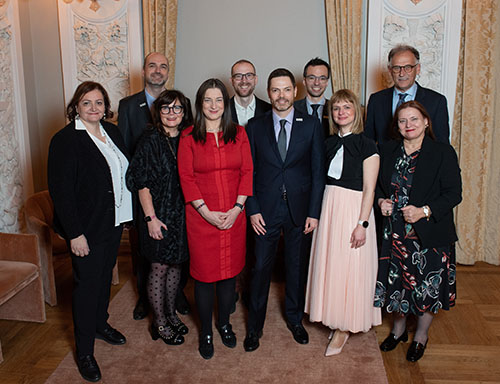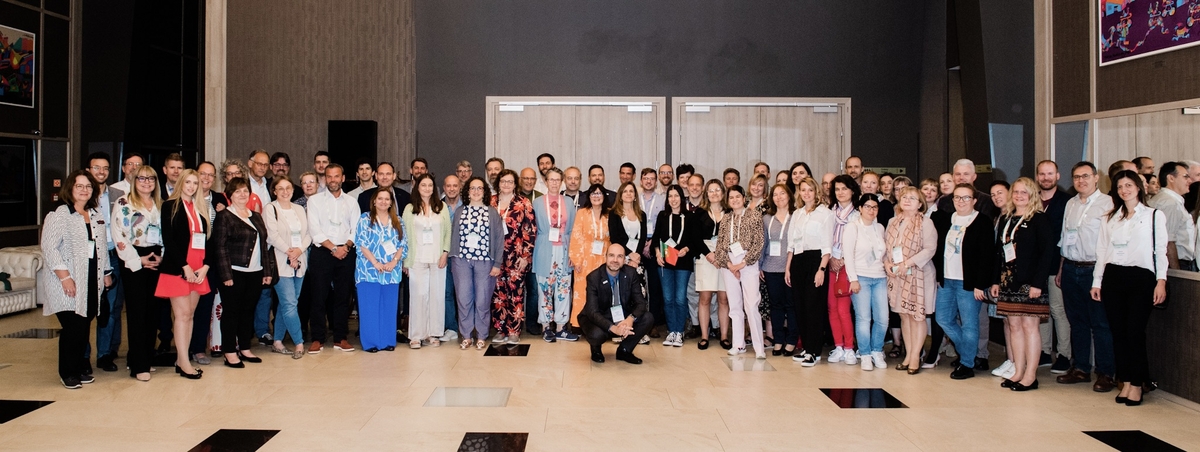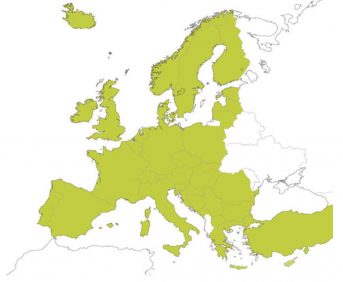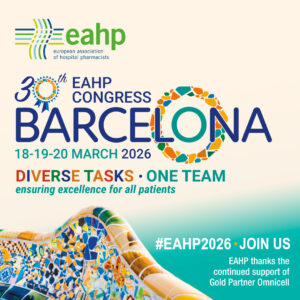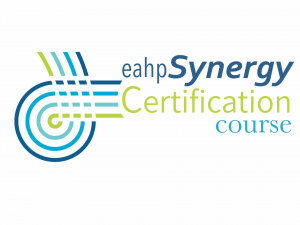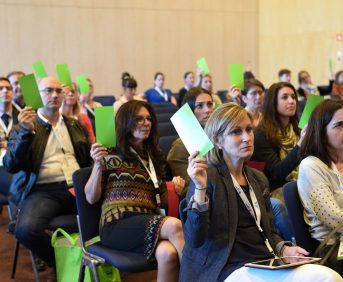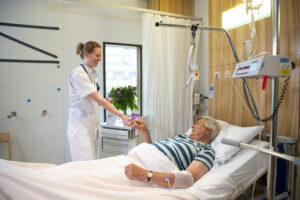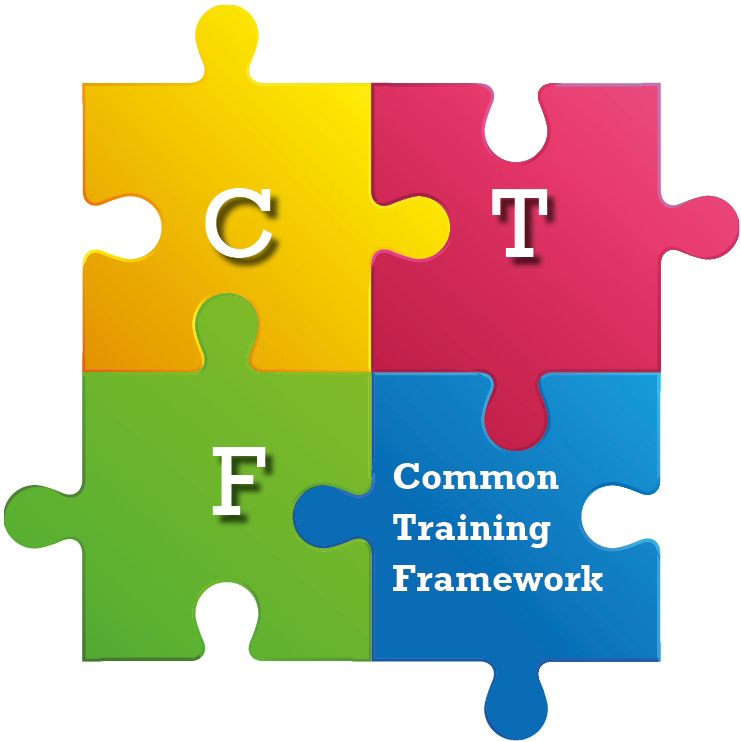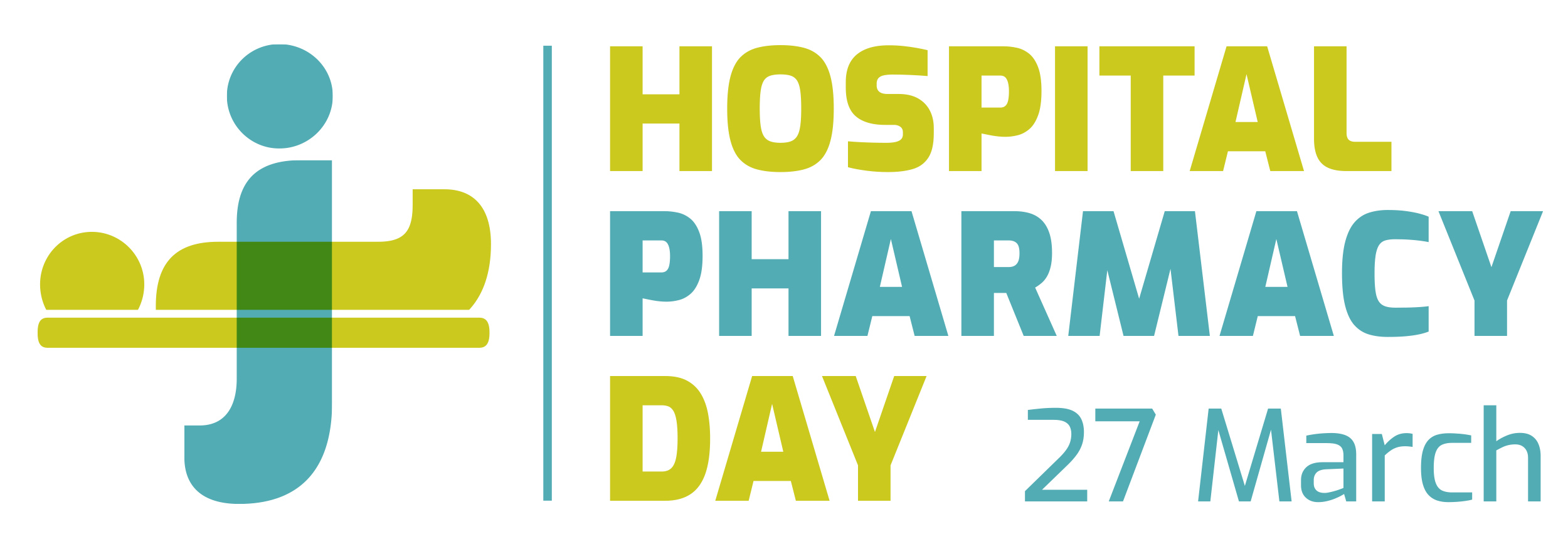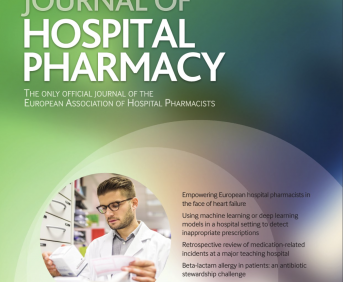IMMPACT: A THERAPEUTIC EDUCATION PROGRAM TO SUPPORT SEAMLESS CARE FOR PATIENTS LIVING WITH CANCER
Pdf

European Statement
Clinical Pharmacy Services
Author(s)
A. Decottignies, D. Bouchoucha, S. Lévêque, S. Barthier, J.F. Morere, A. Marfaing, A. Rieutord
Why was it done?
Cancer has become a chronic disease. However, the impact of the disease and related treatments on patients’ everyday life remain poorly addressed all along the patient clinical pathway. The objective was to customise support to the patient to be able to better understand and control the disease and treatment consequences.
What was done?
An integrated care model based on a therapeutic education programme (TEP) was designed to better support patients living with cancer in their everyday life. The hospital pharmacy led the project, launched in October 2013 and implemented for patients in March 2015. It is called IMMPACT (impact of illness and medication in patients undergoing chemotherapy). This TEP was accredited by the National Authority (ref No ETP 13/30 in August 2013).
How was it done?
A transprofessional working group was formed. Our concern was to propose a smooth and safe transition from hospital to home. To do so, the hospital set up a partnership with the health network to facilitate seamless care. A prospective survey was conducted in October 2013 including 41 ambulatory patients. Three priority themes were identified: tiredness, haematological problems and digestive disorders management. According to the results, educational sessions have been collaboratively designed and implemented.
What has been achieved?
The patients group workshops began in January 2014. To date, 31 group workshops have been run. These group workshops are facilitated by trained healthcare professionals using educational tools such as Barrows Cards, mosaic characters or metaplan. 83 patients have already experienced this programme. Patient global satisfaction is >92%.
What next?
Given the success of this programme and to fulfil the growing expectations of patients, new sequences are being designed about pain, chemotherapy related neurotoxicity, socio-aesthetics and lymphoedema management as well as developing a serious game for the patient. Finally, IMMPACT extension to community pharmacists is being considered to further sustain patients empowerment and continuity of care.
BREAKING BARRIERS: MEDICATION SAFETY IN TRANSITIONS OF CARE
Pdf

European Statement
Clinical Pharmacy Services
Author(s)
M. Cabré Serres, T. Aguilella Vicente, E. Julián Avila, D. Rodríguez Cumplido, J.M. Pepió Vilaubí, M. Muñoz-García
Why was it done?
As a part of a multicentric medication reconciliation (MR) study in the fragile patient, one of the phases of the project included primary care reconciliation so we had to create alliances and enable effective communication channels between the two levels of care.
What was done?
During 2015, we started using direct messaging between hospital pharmacist (HP) and primary care physician. The messaging tool, which is available in SIRE and ECAP programs, allows you to send messages to all physicians caring for the patient. It also allows you to contact the usual pharmacy of the patient. Physicians receive messages automatically during the patient’s clinical course.
How was it done?
When patients were medically discharged, the HP performed MR. The HP contacted the next provider to inform them of changes in the medication list and safety alerts. When the patient visited the doctor, he already had the pharmacotherapy summary and pharmaceutical recommendations in the patient’s electronic clinical course. Afterwards, the HP assessed if the pharmaceutical interventions (PIs) had been accepted.
What has been achieved?
We started using the tool in January 2015. We performed 205 discharge reconciliations and have sent 143 messages. This would be 0.7 PIs/patient. PIs have been: 26.6% (n=38) remove medication, 21.0% (n=30) monitor treatment, 21.0% (n=30) increase adherence, 11.2% (n=16) modify dose, 8.4% (n=12) add medication, 6.3%(n=9) modify posology and 5.6% (n=8) replace medication. Finally, 72.7% (n=104) of PIs have been accepted and 27.3% (n=39) rejected. We can also analyse population characteristics and the drugs involved in the PIs.
What next?
We are breaking barriers between hospital and primary care with nexus of the HP, who has begun to be part of the medical team. We want to continue in this direction to improve the results of our PIs. We want to determine if our PIs improve health outcomes. Another current problem in the transition of care is hyperprescription treatments with proton pump inhibitors or benzodiazepines. A de-prescription programme could be the next step.
ELECTRONIC RECORDING OF MEDICATION RECONCILIATION AS A RELIABLE REFERENCE FOR MULTIDISCIPLINARY CARE
Pdf

European Statement
Clinical Pharmacy Services
Author(s)
C. Bilbao Gómez-Martino, M.I. Borrego Hernando, A. Santiago Pérez, M.P. Pacheco Ramos, A.E. Arenaza Peña, L. Zamora Barrios, E. Rodríguez del Río, J.C. Tallón Martínez, Á. Nieto Sánchez, M.L. Arias Fernández
Why was it done?
MR has been proven to reduce medication errors at admission. If there are no electronic records of PCM, the information obtained by MR usually gets lost and could lead to repetition of errors.
What was done?
We provided electronic updated reports of patients’ current medications (PCM) after performing medication reconciliation (MR) at admission, although the electronic medical record (EMR) is not yet developed in our hospital.
How was it done?
The procedure, designed in the framework of a pilot MR programme, was gradually implemented in three hospitalisation units: internal medicine, geriatrics and oncology.
In order to make the medication reconciliation reports (MRR) reliable, the pharmacist consulted primary care prescriptions and at least two other independent sources of information, such as: emergency department’s admission report, previous clinical reports, self-reported medication list or the medication itself, if possible. The information was confirmed by a standardised clinical interview. Medication discrepancies were clarified by specific closed ended questions. The rest of treatment was investigated by open ended questions.
MRR included current chronic medication, relevant medications administered on demand, herbal medicines used for therapeutic purposes and other relevant data (inappropriate medications, interactions, dysphagia, adherence). Sources of information were also detailed.
MRR were integrated within the electronic hospitalisation reports, which were easily accessible via the hospital intranet.
At discharge, printed copies of reports were handled to patients.
What has been achieved?
99 MRR were recorded. 751 PCM were registered and 183 MR errors (MRE) were detected.
We contribute to the ‘best possible medication history’ of patients. This initiative might have improved patient safety by reducing discharge and readmission MRE, although it has not yet been measured.
We enhanced the pharmacist’s role in the multidisciplinary team.
What next?
This model of electronic MRR could become a useful reference for healthcare professionals, until the EMR is implemented. The next aim is to register MRR and all pharmaceutical care information in the EMR to improve our patients’ healthcare.
DEVELOPMENT OF AN INTERACTIVE PLATFORM FOR PROVINCE CLINICAL PHARMACEUTICS WHO ARE IN CHARGE OF THE TREATMENT OF HEPATITIS C INFECTED PATIENTS
Pdf

European Statement
Clinical Pharmacy Services
Author(s)
S. Jornet Montaña, M. Martín Marqués, P. Jolonch Santasusagna, M. Juan Aguilar, C. Gomez Blanco, P. Salvador Collado
Why was it done?
The constant development of new therapies against hepatitis C and the lack of experience in their management requires health professionals to work together.
What was done?
An online platform was created to make inquiries, resolve doubts and establish a shared database among clinical pharmaceutics within the province.
How was it done?
Meetings of the provincial pharmaceutical association were conducted to jointly identify shared necessities across professionals and to determine the best communication system to be used in terms of efficiency, speed and reliability.
What has been achieved?
The pharmaceutical association created an interactive platform, which was easily accessible from a virtual campus. The platform eases the tasks of sending inquiries and comments about side effects to all pharmaceutical professionals in the system, simultaneously and in a timely fashion. This platform also allows the creation of debate forums to answer questions, and promotes knowledge sharing among participants. As time goes by and based on experience of new drugs, a drug interactions database is created. The platform also allows knowledge of whether specific combinations of drugs have been used and the hospital’s own experience, even if no official studies exist. In addition, the platform allows updating the previously introduced interactions and shows who has done it, so this participant can be asked if necessary. This system also allows the sharing of written information, such as patient brochures, recommendations, bibliography and scientific society links and other websites of interest.
What next?
The created platform meets the pharmaceutical participants’ expectations and allows equal treatment of all patients independently of the hospital where they are located. This platform allows professionals to work together for the same cause and overcome individual knowledge and resources constraints. This platform will be used for other illnesses for which special pharmaceutical attention is required. Finally, the platform will be expanded by inviting other provinces to join our project.
Medication reviews conducted by clinical pharmacist in emergency ward
Pdf

European Statement
Clinical Pharmacy Services
What has been achieved?
.
A TARGETED STRATEGY AND TRAINING PROGRAM TO IMPROVE THE MEDICATION RECONCILIATION PROCESS
European Statement
Clinical Pharmacy Services
Why was it done?
Medication reconciliation at admission was implemented in our hospital in 2011 and since then we could hardly meet the expectations of clinicians (completion of a Best Possible Medication History (BPMH) for 70% of patients in less than 24 hours). We also observed that the high patient volume decreased the quality of our BPMH completion process.
What was done?
We developed a strategy and an organisational thinking to remove human and technology barriers in performing medication reconciliation (MR). We designed a program to improve the overall quality of MR and increase the added value of MR for clinicians, nurses and pharmacists.
How was it done?
Our approach included four steps:
(1) “customer approach”; by conducting semi-structured interviews with students, clinicians and nurses to get their feedback, needs, expectations about medication reconciliation,
(2) literature review with Pubmed® and Embase®and benchmarking of other similar practices in France and Canada
(3) set a task force including pharmacists and students to define a strategy and metrics
(4) design solutions and assess them.
What has been achieved?
First, we defined and chose to target “High risk” admission inpatients only. Second, a training program based on two e-learning modules was implemented to develop skills of pharmacy students and residents. This program explores the “why” of conducting MR based on real life examples. It also defines the “what” (what is MR) and the “how” (i.e the different steps to run a MR and how to appropriately interact with the patient).
What next?
At each student rotation, the efficacy of the training program will be evaluated by comparing the concordance of BPMHs performed separately by a student and a pharmacist. A survey will be conducted to evaluate the level of learners’ satisfaction.
INTEGRATED ONCOLOGY PHARMACY UNIT IN MULTIDISCIPLINARY TEAM
Pdf

European Statement
Clinical Pharmacy Services
Why was it done?
There was a previous collaboration between the pharmacy and medical oncology but with many problems due to the physical separation between the two units. There was a lack of knowledge of the needs of both services.
What was done?
To provide integral cancer care to the patients. We prepare the standard or investigational treatments the day of analysis and medical consultation. In the pharmacy consultation, we provide information and training to patients and their caregivers about the use of antineoplastic, evaluate their polytherapy and complementary and alternative therapy, drug interactions, conciliation, dispense doses and adjusted to help improve treatment and adherence and tolerance amounts.
How was it done?
Change of hospital, creation of new onco-hematology unit(2003), good feedback, and integration in clinical sessions.
What has been achieved?
The pharmacist reviews each chemotherapy order in relation to all known factors concerning the patient. If questions arise, the physician originating the order is contacted. Orders are verified with a protocol, standard regimen or standard dosing guidelines. The oncology pharmacist contributed to the design of chemotherapy protocols by electronic prescribing program (Farmis_Oncofarm®) and supportive care protocols. Activity (2013):22.770 preparations of intravenous chemotherapy, 9.651 patients consulting pharmacy. Reusing cytostatics in a centralized pharmacy preparation unit (Nplate®saving:129.910€(31.7%)), the preparation of parenteral mixtures at the pharmacy department minimises costs compared to preparation on wards (estimated saving 2.500.000€).The unit is also actively engaged in clinical trials (166 trials) and other research projects (pharmacogenetics and adherence with electronic monitoring system) with several publications (∑IF=84). It is a reference model clinical and teaching, oncology pharmacy unit is a preceptor to residents, staffs of other hospitals. Realisation of the annual attendance course. Unit Growth: 2 oncology pharmacist(BCOP),1 haematology pharmacist (BCOP),1 paediatric pharmacist, 3 nurses,1 technician and 1 investigator. Implantation of Standard UNE 179003 on Risk Management for Patient and ISO9001. 0.5 % errors and avoiding incidents. High average patient satisfaction(93%).
What next?
Allow direct patient interaction through a econsultation platform and twitter. A staff preceptorship and traceability system for the preparation and administration(barcode) implement.
